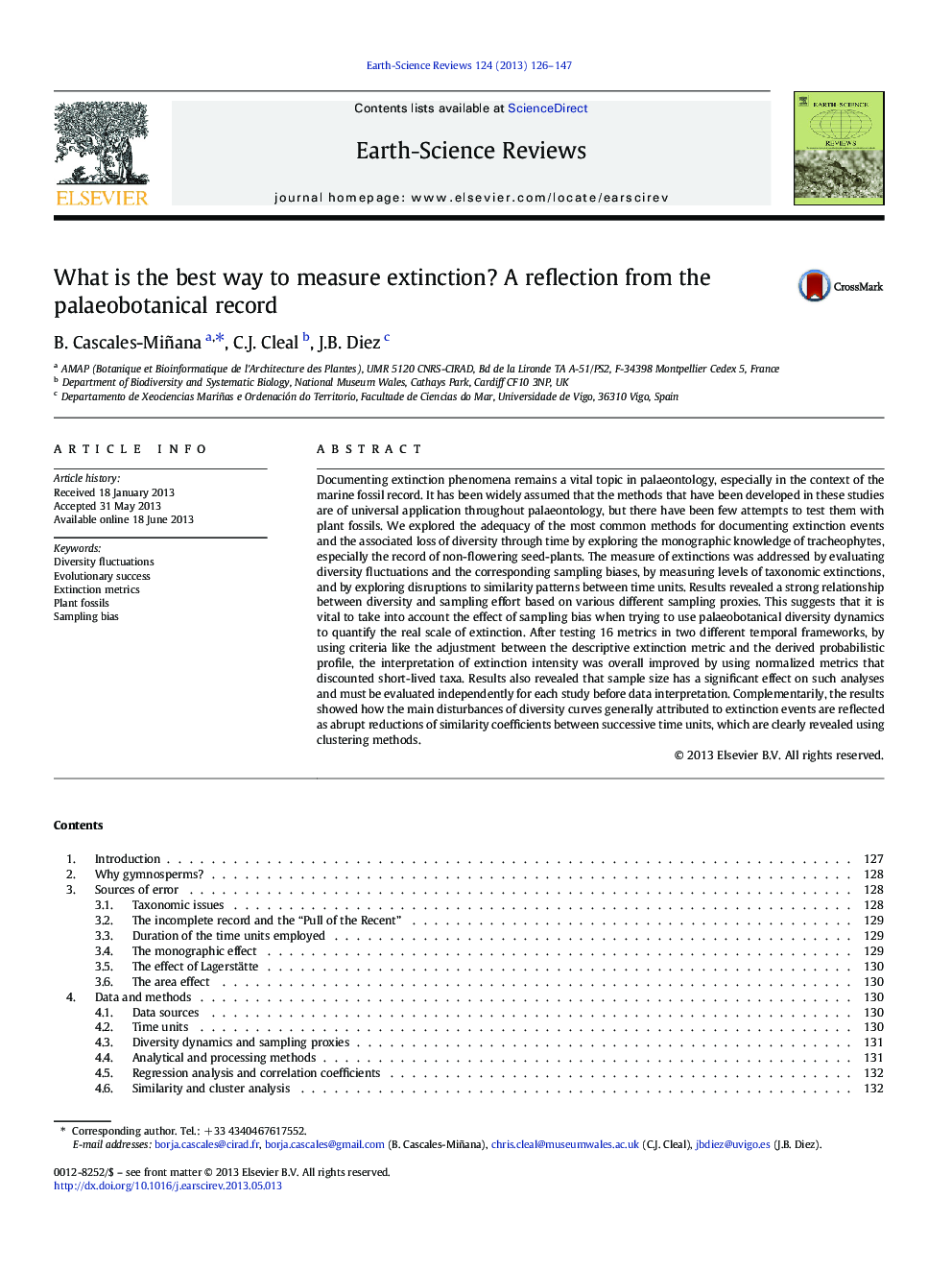| کد مقاله | کد نشریه | سال انتشار | مقاله انگلیسی | نسخه تمام متن |
|---|---|---|---|---|
| 4725852 | 1639978 | 2013 | 22 صفحه PDF | دانلود رایگان |

Documenting extinction phenomena remains a vital topic in palaeontology, especially in the context of the marine fossil record. It has been widely assumed that the methods that have been developed in these studies are of universal application throughout palaeontology, but there have been few attempts to test them with plant fossils. We explored the adequacy of the most common methods for documenting extinction events and the associated loss of diversity through time by exploring the monographic knowledge of tracheophytes, especially the record of non-flowering seed-plants. The measure of extinctions was addressed by evaluating diversity fluctuations and the corresponding sampling biases, by measuring levels of taxonomic extinctions, and by exploring disruptions to similarity patterns between time units. Results revealed a strong relationship between diversity and sampling effort based on various different sampling proxies. This suggests that it is vital to take into account the effect of sampling bias when trying to use palaeobotanical diversity dynamics to quantify the real scale of extinction. After testing 16 metrics in two different temporal frameworks, by using criteria like the adjustment between the descriptive extinction metric and the derived probabilistic profile, the interpretation of extinction intensity was overall improved by using normalized metrics that discounted short-lived taxa. Results also revealed that sample size has a significant effect on such analyses and must be evaluated independently for each study before data interpretation. Complementarily, the results showed how the main disturbances of diversity curves generally attributed to extinction events are reflected as abrupt reductions of similarity coefficients between successive time units, which are clearly revealed using clustering methods.
Journal: Earth-Science Reviews - Volume 124, September 2013, Pages 126–147